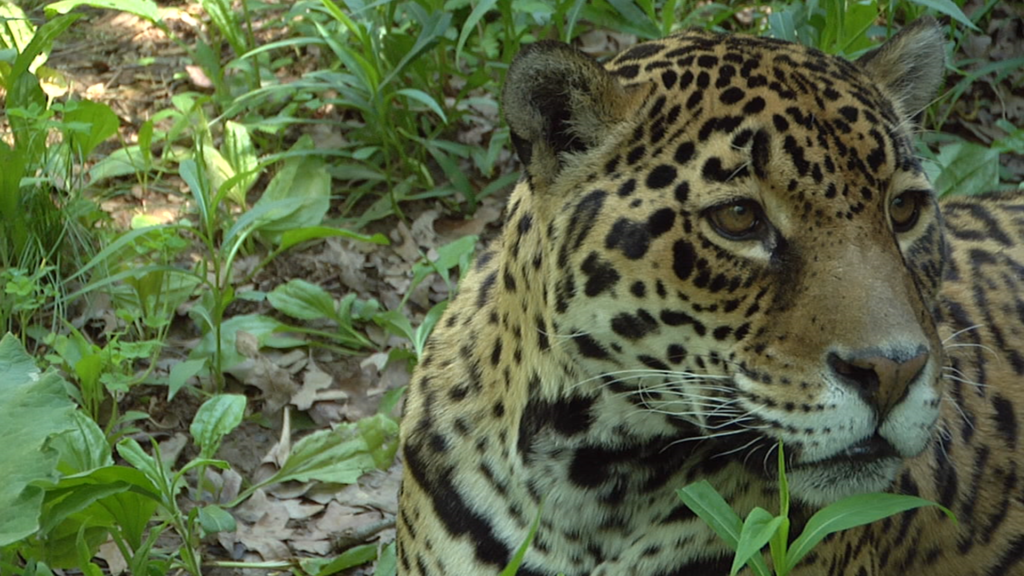On December 13, 2021, Catoctin Wildlife Preserve said goodbye to the female jaguar that had been part of their animal family for almost three decades.
Beloved “Evita” had been receiving veterinarian prescribed comfort care medications for over a year for age-related ailments common to senior felines. After a sharp decline in her quality of life, the Preserve’s Animal Welfare Team made the difficult decision to humanely euthanize the exotic cat.
At 27 years old, “Evita” was the oldest known jaguar in the United States, living almost twice as long as jaguars typically do in the wild. She arrived at Catoctin Wildlife Preserve as a juvenile, still filling out and finding her way.
Conceived and born at another veterinary managed private zoological facility, she tapped souls with a gaze that could look right through you, as it did for tens of thousands of visitors. She became a supermodel for endangered species just by being herself – absolutely wild and thriving in the zoological setting providing proper care for her physical and mental well-being.
Unlike many other big cats, jaguars are generally solitary. So it wasn’t until Evita was sexually mature that she was carefully introduced to potential mates. Jaguars are listed as “near threatened” on the IUCN Red List, meaning the population is in serious decline. Coordinated breeding agreements bolster the world’s jaguar population and help keep bloodlines strong.
The Preserve was pleased when she finally accepted her second suitor, a black jaguar named “Diego,” and had two cubs. When they matured, the cubs became part of coordinated breeding programs and were rehoused at other zoos. This continued the pursuit of genetic diversity, undoubtedly contributing to the zoological Jaguar population here in the US and positively influencing the future of Jaguars in the wild.
Evita was equal parts stealthy hunter and regal Amazon queen, making her a favorite with guests. She was fond of sneaking up on children who were peering through the enclosure glass, startling them with a pounce and paw on the reinforced pane.
“I feel honored to have known her,” said General Curator Laurie Hahn. ” Even more to have been her caretaker and her friend. We were friends, I have no doubt. I just can’t believe I’m not going to see her tomorrow. I can’t imagine a day that I won’t think about her.”


Recent Comments